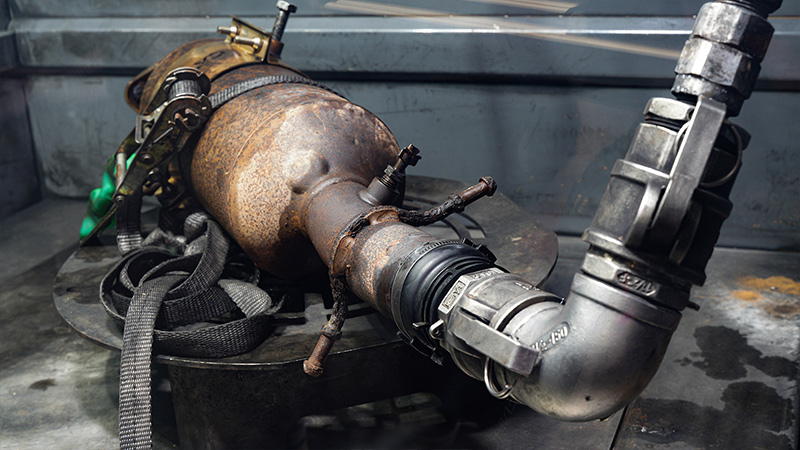DPF Cleaning
If you own a diesel vehicle, chances are you're familiar with the Diesel Particulate Filter (DPF) installed in its exhaust system. While DPF technology has been in use for over two decades, it wasn't until 2011-2013 that it became mandatory for all diesel vehicles under Euro 5 emission standards. This regulation aimed to curb CO2 emissions from diesel vehicles and protect the environment. As a result, MOT testing stations began including DPF inspections in their tests from 2014 onwards. Recognizing this, we offer high-quality DPF cleaning services to help ensure your vehicle passes its MOT certification.
SO, WHAT EXACTLY DOES A DPF DO, AND HOW CAN YOU MAINTAIN IT?

What is a DPF?
DPF Cleaning
DPF / FAP / KAT CLEANING METHODS
HOW TO CLEAN DPF FILTER THE RIGHT WAY?
Pros:
Cons:
Pros:
Cons:
Pros:
Cons:
Pros:
Cons:
Pros:
Cons:
Pros:
Cons:
When you need a DPF replacement?
If the filter is too dirty to clean, it must be replaced. Make sure you buy the right replacement filter for your vehicle or equipment, and follow the manufacturer’s instructions for installation.
DPF CLEANING - FAQ




Based in Eastbourne, we are perfectly located to offer our range services like turbo reconditioning and repairs, turbo replacement and DPF cleaning across East Sussex, even as far as West Sussex, Kent and Surrey. We offer FREE no-obligation quotes for all of our services and are well-known, tried and tested for all services we provide.
Here you will find a list of all the counties in the United Kingdom covered by Turboworks Ltd for DPF cleaning services.
Surrey
Kent
Surrey
Surrey
Surrey
East Sussex
East Sussex
West Sussex
East Sussex
Kent
West Sussex
Surrey
Kent
Surrey
Kent
Surrey
West Sussex
Surrey
West Sussex
East Sussex
Kent
Kent
Kent
Surrey
Kent
West Sussex
East Sussex
Surrey
Surrey
Surrey
Surrey
Surrey
Kent
Kent
Surrey
Kent
Surrey
Kent
Surrey
East Sussex
Kent
Surrey
East Sussex
West Sussex
East Sussex
Kent
Surrey
West Sussex
West Sussex
Kent
Surrey
East Sussex
West Sussex
Kent
Kent
Kent
East Sussex
Kent
Surrey
East Sussex
East Sussex
East Sussex
Kent
Surrey
Surrey
Kent
East Sussex
East Sussex
East Sussex
Kent
Kent
West Sussex
Kent
Kent
West Sussex
West Sussex
Surrey
West Sussex
Kent
Kent
Kent
Kent
East Sussex
Surrey
West Sussex
Surrey
Kent
West Sussex
Surrey
